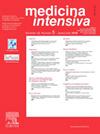能力本位医学教育对重症医学培训质量的影响。COBALIDATION试验
IF 3.1
4区 医学
Q2 CRITICAL CARE MEDICINE
引用次数: 0
摘要
本研究的主要目的是评估与目前西班牙重症监护医学官方基于时间的计划相比,CoBaTrICE(欧洲重症监护医学基于能力的培训)的实施是否提供了更高水平的能力。次要目标是:1)确定关键基本绩效要素(CEPE)完成的百分比,2)确定符合基于工作场所的评估(wba)。设计多中心群随机试验。13个西班牙ICU科室。CoBaTrICE的实施包括:(1)培训培训师;(2) Wba;(3)电子投资组合的使用。每位参与者的能力水平是通过在第5年培训期结束时进行的基于模拟的客观结构化临床考试(OSCE)来确定的。主要兴趣变量:五种场景的总分,完成cep,能力水平(1-5)。结果在欧安组织共分析了26名居民的119项表演,其中CoBaTrICE组17项,对照组9项。CoBaTrICE居民的胜任能力水平更高[2(1−5)vs. 2(1−3),p = 0.07],CEPE的完成率也高于对照组(78% vs. 71%, p = 0.09)。结论CoBaTrICE组与对照组相比,表现出更好的趋势,但差异无统计学意义。由于进行的Wba数量较少,需要进一步的研究来确定CoBaTrICE的潜在优势。本文章由计算机程序翻译,如有差异,请以英文原文为准。
Effect of a competence based medical education program on training quality in Intensive Care Medicine. COBALIDATION TRIAL
Objectives
The main objective of this study was to evaluate whether the implementation of CoBaTrICE (Competency-Based Training in Intensive Care Medicine in Europe) provides higher levels of competency in comparison with the current official time-based program in Intensive Care Medicine in Spain. Secondary objectives were: 1) To determine the percentage of critical essential performance elements (CEPE) accomplished, 2) To determine compliance with workplace-based assessments (wba).
Design
Multicenter cluster randomized trial.
Setting
Thirteen Spanish ICU Departments.
Participants
Thirty-six residents
Intervention
The implementation of CoBaTrICE included: (1) Training the trainers; (2) Wba; (3) The use of an electronic portfolio. The level of competency achieved by each participant was determined by a simulation-based Objective Structured Clinical Exam (OSCE) performed at the end of the 5th year of training period.
Main variables of interest
Total scoring in the five scenarios, CEPE completed, level of competency (1–5) achieved.
Results
A total of 119 performances from 26 residents (17 from CoBaTrICE group and 9 from control group) were analyzed in the OSCE. CoBaTrICE residents´ achieved higher levels of competency [2 (1−5) vs. 2 (1−3), p = 0.07) and higher percentages of CEPE´s accomplishment than the control group (78% vs. 71%, p = 0.09).
Conclusions
The CoBaTrICE group showed a better performance trend in comparison to the control group, but the differences were not statistically significant. Since the number of Wba performed was low, additional research is needed to determine the potential superiority of CoBaTrICE.
求助全文
通过发布文献求助,成功后即可免费获取论文全文。
去求助
来源期刊

Medicina Intensiva
CRITICAL CARE MEDICINE-
CiteScore
2.70
自引率
20.00%
发文量
146
审稿时长
33 days
期刊介绍:
Medicina Intensiva is the journal of the Spanish Society of Intensive Care Medicine and Coronary Units (SEMICYUC) and of Pan American and Iberian Federation of Societies of Intensive and Critical Care Medicine. Medicina Intensiva has become the reference publication in Spanish in its field. The journal mainly publishes Original Articles, Reviews, Clinical Notes, Consensus Documents, Images, and other information relevant to the specialty. All works go through a rigorous selection process. The journal accepts submissions of articles in English and in Spanish languages. The journal follows the publication requirements of the International Committee of Medical Journal Editors (ICMJE) and the Committee on Publication Ethics (COPE).
 求助内容:
求助内容: 应助结果提醒方式:
应助结果提醒方式:


